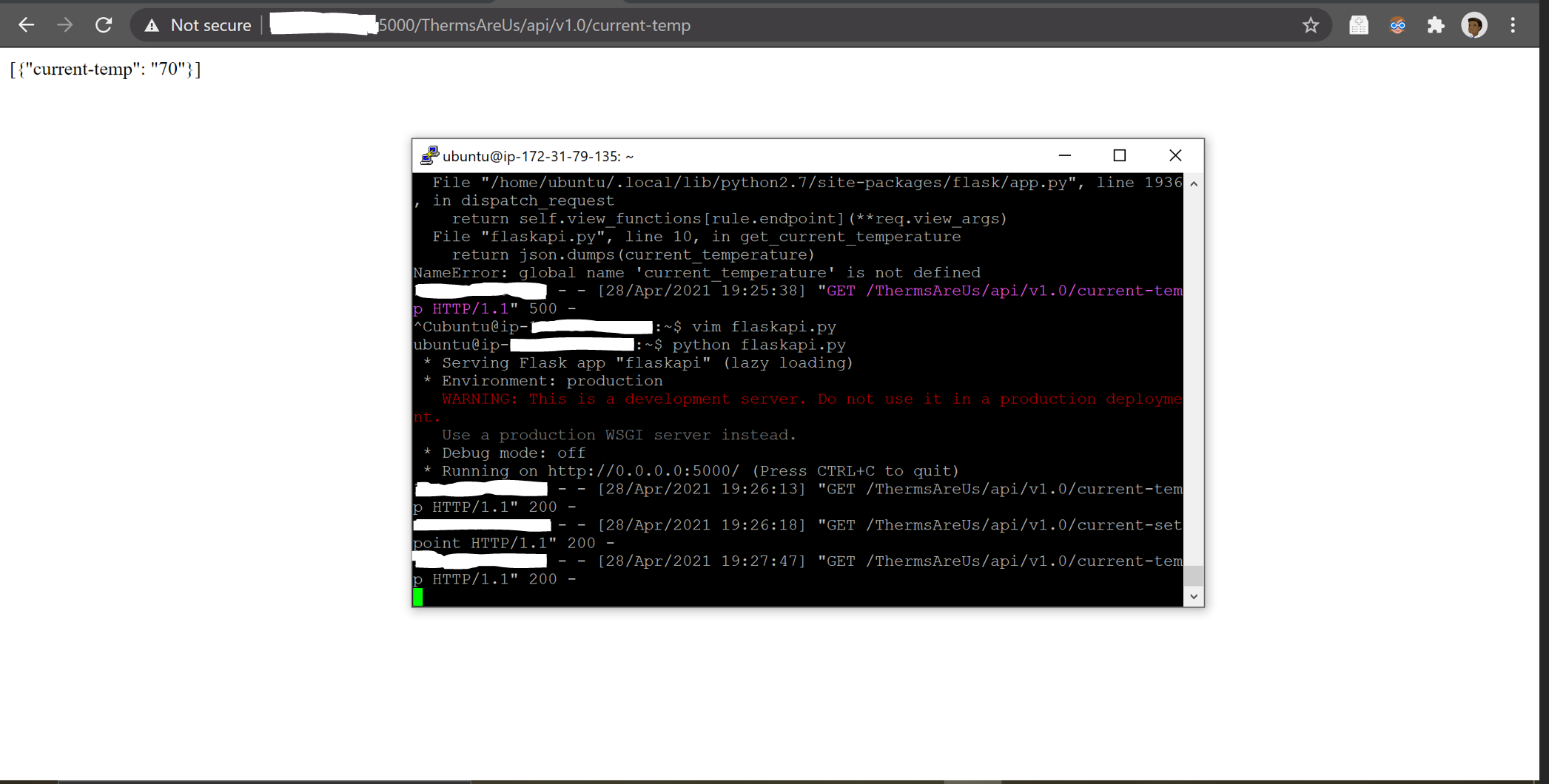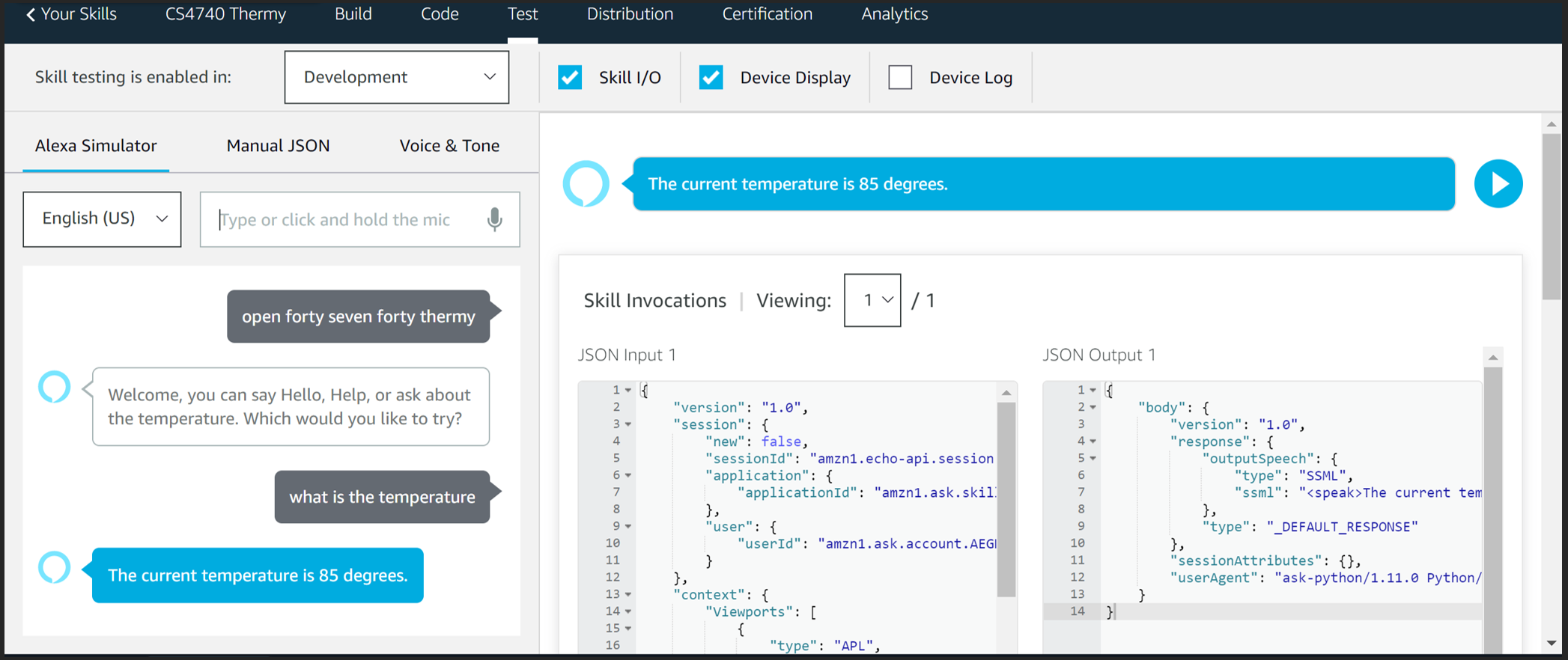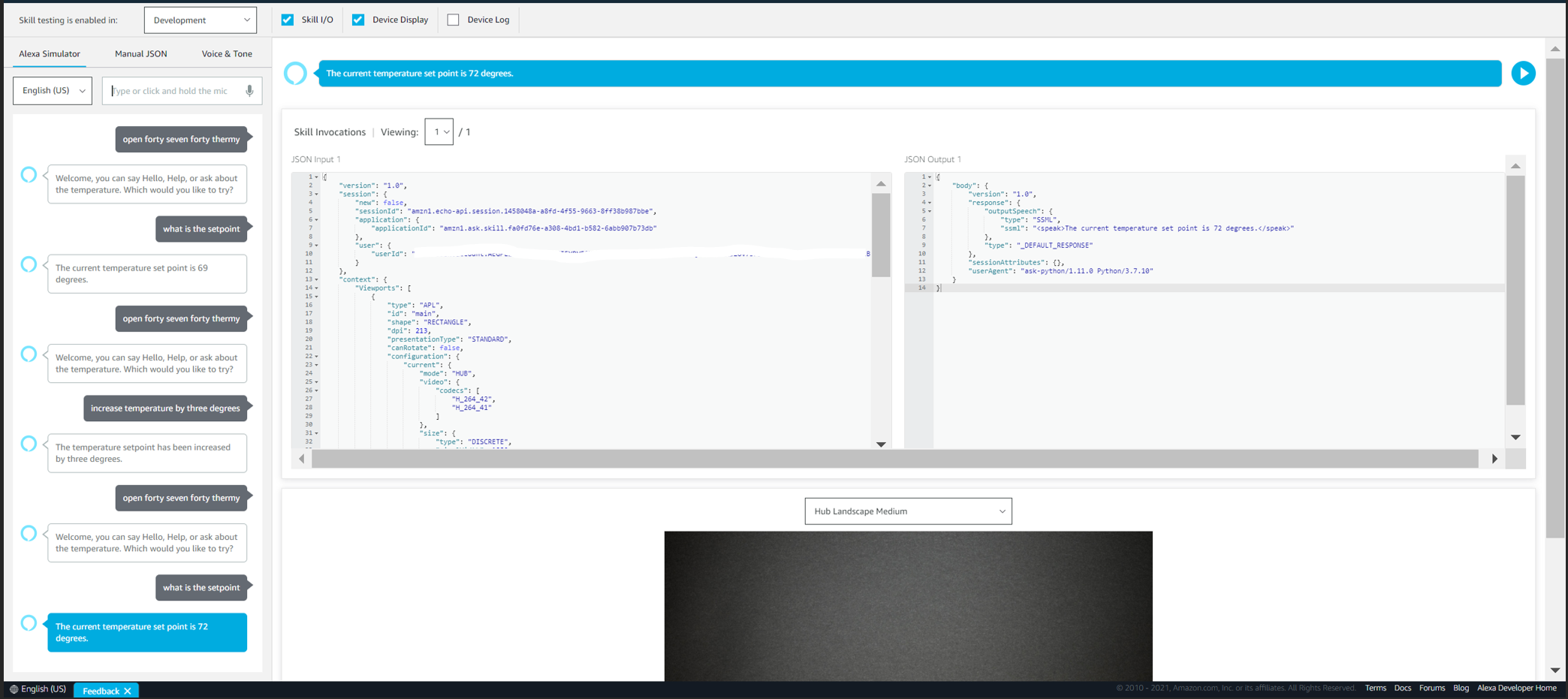Gain hands-on experience with Alexa (Voice), Serverless, REST, and Flask.
This project was created as a proof of concept for voice enabling a home thermostat. The original problem statement was as follows: "Your company makes an awesome home thermostat. You’re trying to convince your boss to 'voice-enable' it. The unit is not Internet-enabled right now, so your boss doesn’t really even know what this would mean. So you decide to [a] simulate the device if Internet-enabling hardware were to be added to it (via a product redesign), and then [b] show how you could then control it via voice. (Yes, you could describe this via a powerpoint presentation, but you want to make it more concrete than that, because – as you know – “Code Wins Arguments”)."
Due diligence for any cloud project starts with setting a budget to limit resource usage overflow. Always be sure to consistently change the AWS region to what is physically closest (as seen in the top right of the dashboard). Create a cost budget, giving adequate notification metrics. It is recommended that an email notification would be sent after 75% of the indicated budget.
The first step of the project was to create a REST based API service to simulate the device. I used a Ubuntu 18.04 EC2 instance to run a lightweight Flask app to operate the API. The following interface needed to be supported at a minimum.
| HTTP Method | URI | Action |
|---|---|---|
| GET | http://[hostname]/ThermsAreUs/api/v1.0/current-temp | Retrieve current temp in room |
| GET | http://[hostname]/ThermsAreUs/api/v1.0/current-setpoint | Retrieve current setpoint (desired temp) |
| PUT | http://[hostname]/ThermsAreUs/api/v1.0/current-setpoint | Update current setpoint (desired temp) |
The Flask server alone does not support data persistence, and so to secure the setpoint value I stored it locally in a data file on the EC2 instance (see Next Steps for a better solution). Below is a screenshot of the browser when accessing http://[hostname]/ThermsAreUs/api/v1.0/current-temp.
The second step was to create an Alexa-hosted python Skill called that I called Thermy. The deployed code was hosted in a Lambda function. The skill was invoked using a keyword string, and an intent was created to return a hard coded temperature value. Below is a picture of the test value being returned.
Then instead of simply returning a hardcoded value, I implemented calls to the REST API hosted on an EC2 instance created earlier. The following screenshot shows an interaction with Alexa, setting and getting the simulated temperature device.
As you can see, invoking the Skill with such a long keyword string every time is rather tedious, however, as a commercial product the keyword string would likely be simpler, such as "Thermy". Repetition is necessary to distinguish invocations from other IoT devices.
Storing the setpoint value in a local file is not the best practice, each component should be separated into individual services. This value should be stored in a database, perhaps using AWS RDS. The REST API also is not authenticated, which is fine for a mock project, but in a commercial product this is a clear must-have.
This project is no longer being served on AWS due to budget constraints.
Thanks goes to Marty Humphrey (University of Virginia, 2021) for providing project guidelines during CS 4740 S21.



